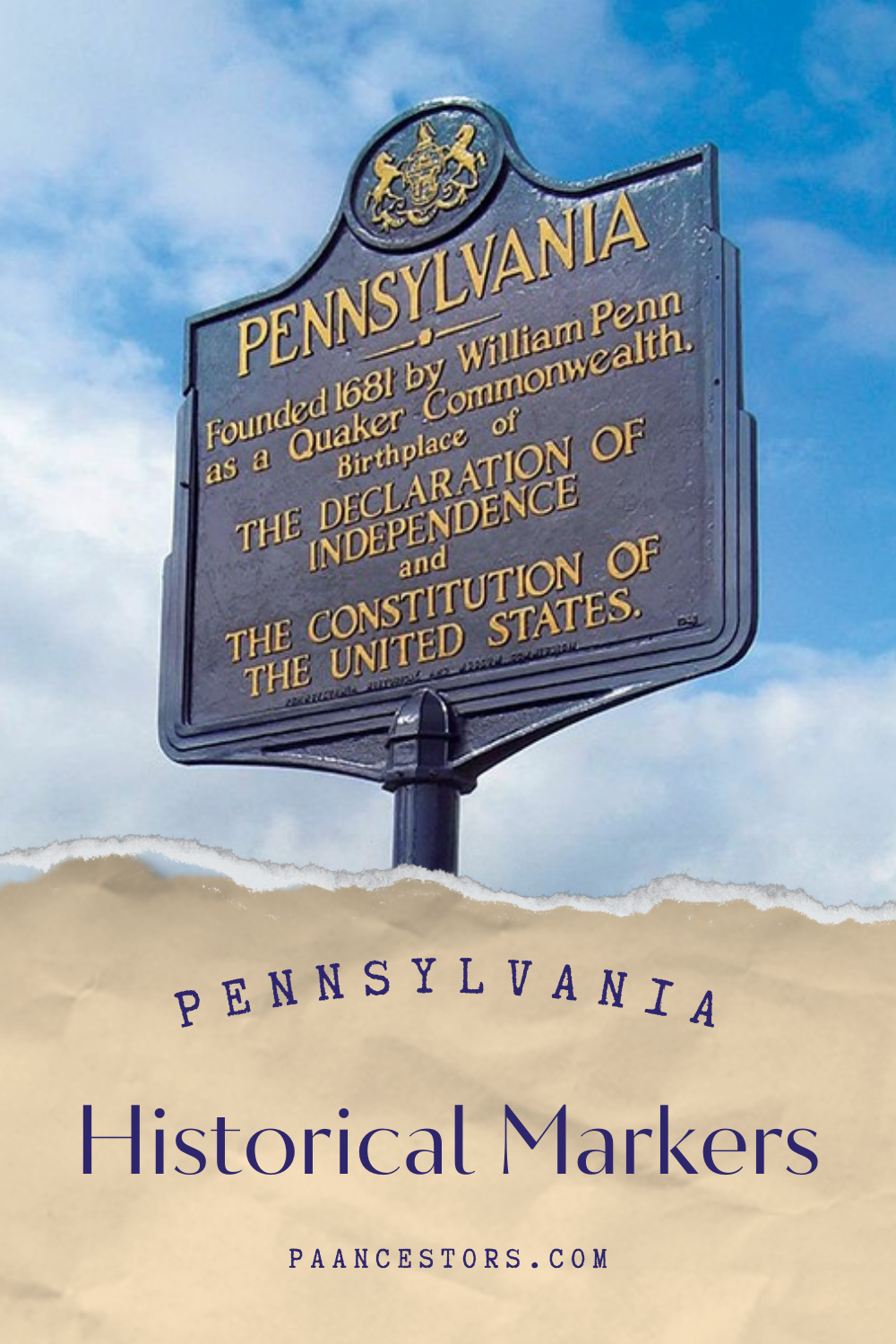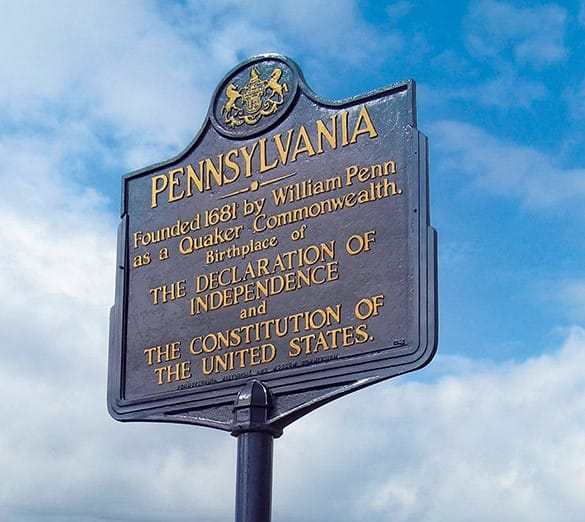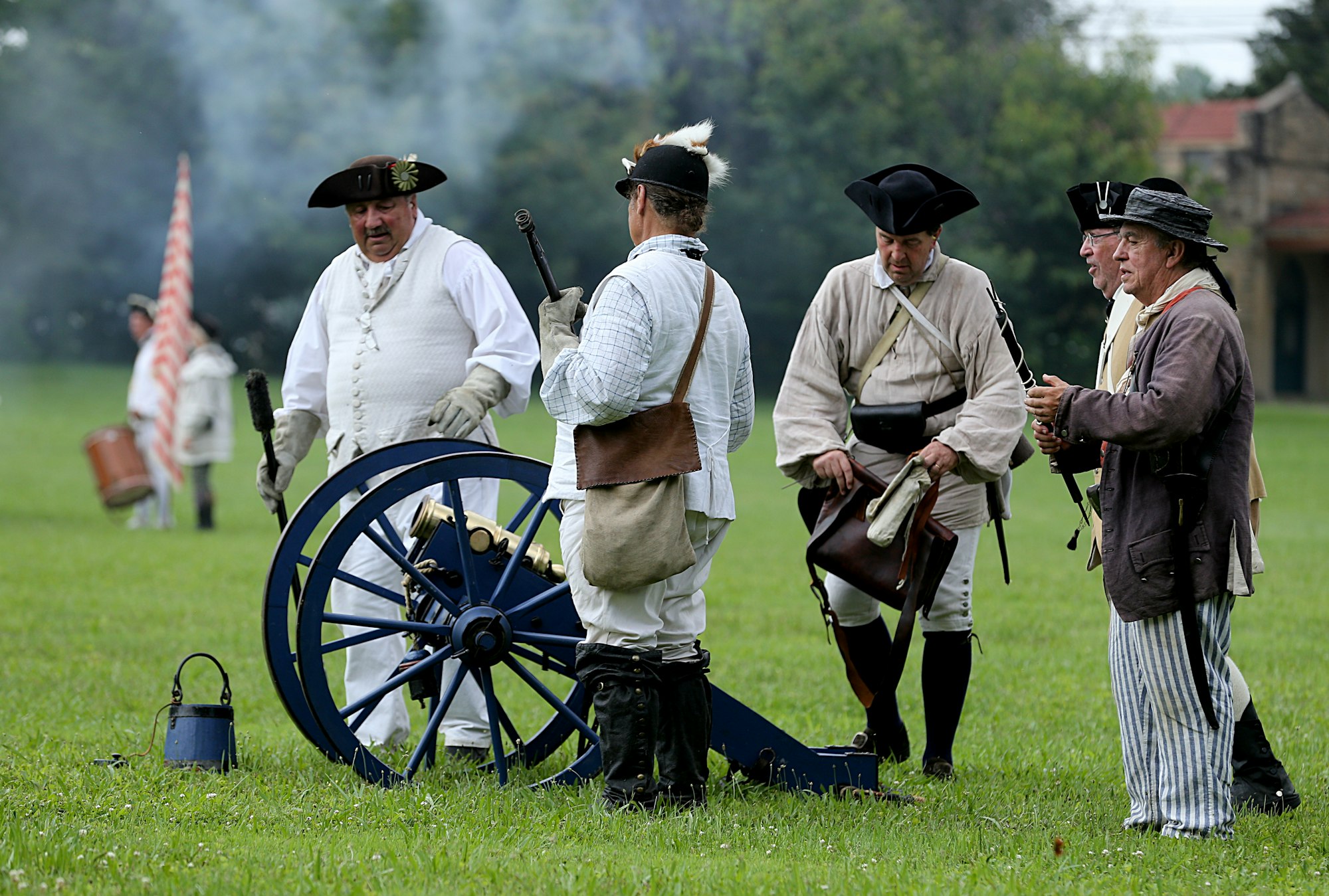Using PHMC Historical Markers for Genealogy Research
When you know the local history your ancestors experienced, your family history comes alive. Here's how to learn it with the PHMC historical marker program.

Pennsylvania is a state with a long and complicated history.
Most genealogists only know the basics of the state’s history and could use help in learning about local events. One valuable resource to do this is the Pennsylvania Historical Marker Program.
In this article, we will cover into the history of the PHMC historical markers, explore their importance for genealogy research, and provide a guide on how to locate and utilize these markers effectively.
The Origins of the PHMC Historical Marker Program
The Pennsylvania Historical Marker Program was established in 1914 by the Pennsylvania Historical Commission (PHC), now known as the Pennsylvania Historical and Museum Commission (PHMC). The primary purpose of the program was to mark and memorialize people, events, and places that have shaped the state's history.
The markers served as tangible reminders of Pennsylvania's rich heritage and aim to educate and inform the public about the state's history. The PHMC began its work by surveying existing memorials and monuments, both public and private, to determine what had already been commemorated.

The Evolution of Marker Design
Over the years, the design of the PHMC historical markers has evolved to better serve their purpose. The earliest markers were made of bronze and shaped like keystone plaques with the Pennsylvania coat of arms. These markers were often mounted on large stones found in the Pennsylvania countryside.
In the 1940s, a new design was introduced featuring gold-colored raised text on a deep blue background within a silver-colored frame. These "history on a stick" markers, made of concrete, were easier to spot and read by motorists.
Today, the markers are cast in aluminum and come in two types: larger roadside markers and smaller city markers, suitable for urban settings.
The Value of PHMC Historical Markers for Genealogy Research
For genealogists, PHMC historical markers hold immense value in showcasing the stories of their ancestors.
By visiting these markers either online at the PHMC website or in person, genealogists can connect with the past and understand the world of their ancestors. These markers also serve as valuable references to historical records that can spark a new research path into new sources.
Finding and Visiting PHMC Historical Markers
Locating PHMC historical markers is a straightforward process thanks to the PHMC's accessible online database and map.
Historians and genealogists can search for specific markers by location, topic, date, or keyword. Many markers are prominently displayed along roadsides and at historically significant sites, making them easily accessible to the public.
Local historical societies and libraries can also provide information about nearby markers and offer guidance on how to locate them. Exploring these markers can be an exciting and educational adventure for anyone interested in Pennsylvania's history.

Interesting Examples of PHMC Historical Markers
To illustrate the value and significance of PHMC historical markers, here’s a few noteworthy examples:
Fishing Creek Confederacy
Some local citizens in Benton, PA were opposed to the mandatory federal drafts into the Union Army in 1863 and 1864 and protested. Over 800 federal troops arrived and arrested those who protested. In 1866, the U.S. Supreme Court ruled their arrests unconstitutional.
1902 Anthracite Coal Strike
A 6-month long strike began in May 1902, as 150,000 miners marched for higher pay and work safety. It was one of the longest labor strikes in U.S. history. This strike and several others also spurred the creation of the Pennsylvania State Police to assist in intervening in labor strikes.
Fort Ligonier
One of several British forts constructed along the Forbes Road in the 18th century. Part of Pontiac’s War and the French and Indian War (The Seven Years War). Local leaders reconstructed the fort from original plans in the National Archives of the United Kingdom and you can visit it today.
Adding New Markers: Preserving and Sharing Pennsylvania's History
The PHMC remains committed to expanding the historical marker program by adding new markers annually.
Each year a committee selects eight to twelve additional markers from public nominations. Markers are selected to reflect the contributions of various communities and individuals. Once selected, the markers are created and installed. Local ceremonies by state and county officials are held to dedicate the markers.
Conclusion
Pennsylvania's historical markers, administered by the PHMC, provide a wealth of information and inspiration for genealogists and history enthusiasts alike. These markers serve as tangible reminders of the state's history and offer insights into the lives of our ancestors. So, grab your map, hit the road - or the PHMC website, and journey through Pennsylvania's past using the PHMC historical markers as your guide.
© 2019–2024 PA Ancestors L.L.C. and Denys Allen. All Rights Reserved.
